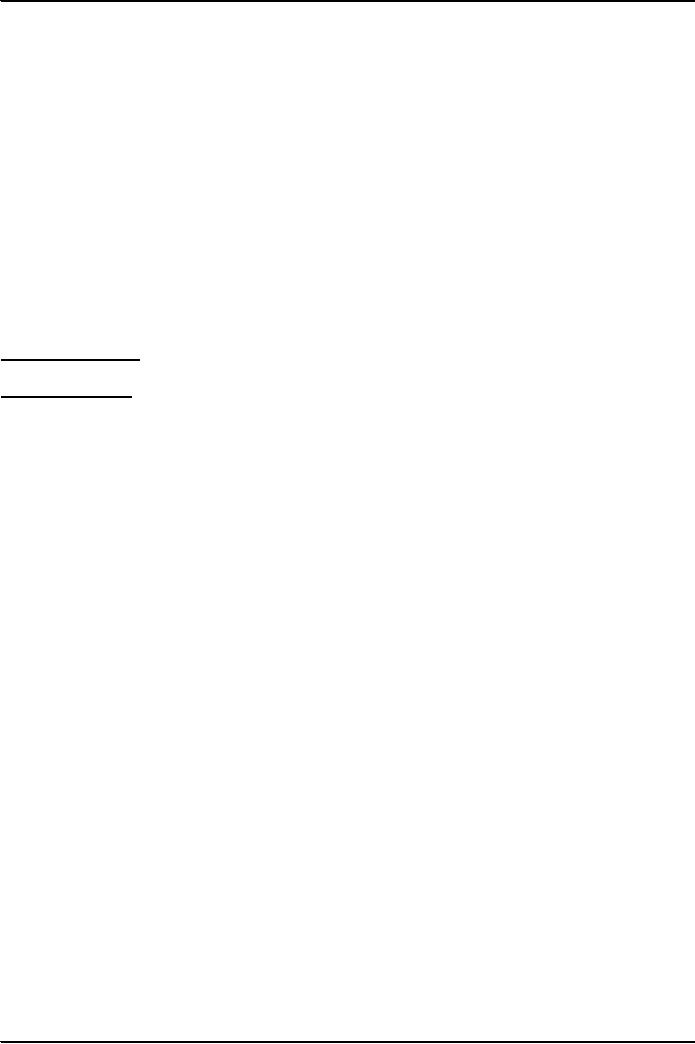 |
CULTURE (continued):Culture by social class, Multiculturalism, Cultural Lag |
| << CULTURE (continued):Beliefs, Norms, Cultural Diversity |
| SOCIALIZATION: HUMAN DEVELOPMENT, NATURE, Social Isolation >> |

Introduction
to Sociology SOC101
VU
Lesson
11
CULTURE
(continued)
Culture
by social class
Cultural
diversity can involve social
class. In everyday life, we
usually use the term "culture" to
mean art
forms
such as classical literature, music,
dance, and painting. We
describe people who regularly go to
the
theater
as "cultured," because we think they
appreciate the "finer things in life." We
speak less generously
of
ordinary people, assuming that
everyday culture is somehow less
worthy. Such judgments imply
that
many
cultural patterns are readily accessible
to only some members of
society. This is how particular
cultural
patterns are associated with
certain classes. We can
further stretch the argument to
other
components
of culture for finding variations in
different classes.
People
often divide society in
different social classes and
find that each class
represents differences in
their
norms,
values, beliefs, attitudes,
and thinking. These
norms, values, and attitudes
may relate to the
institutions
of marriage and family,
religion, education, earning a
living, or their political
behavior, one could
find
the differences. In this perspective culture is
often divided into
as:
High
culture:
Cultural patterns that distinguish a
society's elite.
Popular
culture:
Cultural patterns those are
widespread among a society's
population.
Culture
of poverty:
Cultural patterns shared by the
poor.
Sub-Culture
Cultural
patterns that set apart
some segments of a society's
population. Cluster of patterns
which both are
related
to the general culture of the society yet
distinguishable from it. The
example could be: student
sub-
culture,
business sub-culture.
Multiculturalism
A
policy followed by some
governments whereby they recognize
cultural diversity in the society
and
promote
the equality of all cultural traditions.
Canadian government is following such a
policy.
Counter-Culture
It
is a subculture, which is in active
opposition to the dominant culture.
Cultural patterns that
strongly
oppose
widely accepted patterns
within a society. Example could be of
hippies, and drug
users.
Cultural
change
Cultural
change is the process of alteration of culture
over time. Any difference in a particular
pattern
between
two points in time may be
called cultural change. This
may be a change in the family
pattern,
which
is changing from `joint
family system' to a `nuclear
family system' in Pakistani
society.
Cultural
Lag
All
parts (elements) of culture do not
change at the same rate;
some of them change faster
than the other.
For
example material culture may
change faster than the non-material culture. We
often see it is difficult
to
change
the habits quickly.
The
different rate of change in the
two integrated elements of culture can
result in one element
lagging
behind
the other. William F. Ogburn
called this gap between the
two parts of culture as `cultural lag'.
Such
a
cultural lag usually disrupts the
system. For example we see
so many automobiles on the road. There
is
26

Introduction
to Sociology SOC101
VU
an
increase in their speed as well. There is
a sharp increase in mobility.
Let us look at another
related
aspect;
these automobiles need a
similar change in the quality of
roads, which has not changed
accordingly
or
you can say that it
has lagged behind.
Resultantly there is a lot of
disruption leading to traffic
jams,
accidents,
and pollution. You can
also look at the `traffic
sense' among the public, be they the
drivers, the
passengers,
the cyclists, or the pedestrians. This
lag between the increase in
automobiles and the
inculcation
of
traffic sense in public also
creates disruption in the
system.
Causes
of cultural change
Three
factors bring change in the culture of a
society. These are:
Inventions:
The
process of creating new cultural
elements out of the existing elements.
Since the modern
man
has a comparatively richer reservoir of cultural
elements at his disposal, therefore he
creates more
inventions
than the man in the olden
times. The modern man does
not have to reinvent the
wheel; he has
to
use this wheel, improve upon
it and bring something
new.
Discovery:
It is the
process of finding that
already exists.
Diffusion:
It
means the spread of cultural traits from
one society to another. It is the
borrowing of culture
by
one group from another.
For purposes of diffusion
contact between the two
groups or societies is
necessary.
In the olden times, due to the
lack development of means of
transportation and communication,
contact
between different societies
was limited. Therefore the
diffusion was also limited.
Whatever the
diffusion
took place it was more a
result of physical contact.
But in the modern times there is a
revolution
in
the means of transportation and
communication. Presently people don't
have to be in physical
contact
with
other societies for knowing
about each other's culture and for
borrowing from each other.
With the
help
of electronic media people get exposure
to other cultures and may
like to borrow their cultural
traits.
With
the facilitation of diffusion process
cultural change is quite rapid
now days.
Ethnocentrism
The
practice of judging other's culture by the
standards of one's own culture.
People consider their
own
culture
as superior to others and apply their
standards for evaluating the patterns of
behavior of others.
The
whole judgment is centered on one's
own culture.
Xeno-centrism
Considering
other's culture as superior to one's
own.
Cultural
relativism
The
practice of judging a culture by its
own standards; a particular pattern of
behavior is right or wrong as
it
is
declared by the people who follow
it. Since those people are
follow a particular practice, supposedly
it
might
be serving some useful
function in that society.
Nevertheless, the same practice
may be useful for
one
group and may be harmful
for the other in the same
society.
A
global culture
Today,
more than ever before, we can
observe many of the same cultural
practices being followed the
world
over.
We find people wearing jeans,
hear the familiar music, and
see advertising for many of the
same
products
in different countries. People
learn some international
language for purposes of
communication.
Are
we moving toward the single global
culture?
Societies
now have more contact
with one another than ever
before, involving the flow of
goods,
information,
and people. We are globally
connected through:
27

Introduction
to Sociology SOC101
VU
·
The
global economy: the flow of
goods.
·
Global
communication: the flow of
information.
·
Global
migration: the flow of
people.
These
global links make the
cultures of the world more similar.
But there are three
limitations to the global
culture
thesis. First, the global flow of
goods, information, and people is
uneven. Generally speaking,
urban
areas have stronger ties to
one another, while many
rural villages remain
isolated. Then the
greater
economic
and military power of the Western
society means that this
society influences the rest of the
world
more
than happens the other way
around. Second, the global culture thesis
assumes that people
everywhere
are
able to afford
various
new goods and services.
That is not so as the poor
countries cannot afford
it.
Third,
although many cultural practices
are now found throughout the
world, people everywhere do
not
attach
the same meaning to them.
People have to interpret the other's
cultural practices from their
own
perspective.
Culture
and Human Freedom
Culture
may put all kinds of
constraints on the behavior of people and
at the same time there is
the
freedom,
which may be provided by the
same culture.
Culture
as constraint: Cannot live without culture therefore
we have to accept it. We are
the prisoners of
culture.
Culture
as freedom: Culture provides the opportunity to
make and remake our
world.
28
Table of Contents:
- THE ORIGINS OF SOCIOLOGY:Auguste Comte, The Fields of Sociology
- THE SOCIOLOGICAL PERSPECTIVE:Society affects what we do
- THEORETICAL PARADIGMS:Salient Paradigms, Critical Evaluation
- SOCIOLOGY AS SCIENCE:Empirical, Verifiable, Cumulative, Self-Correcting
- STEPS IN SOCIOLOGICAL INVESTIGATION:Exploration/Consultation
- SOCIAL INTERACTION:Social Status, ROLE, The Social Construction of Reality
- SOCIAL GROUPS:Primary and Secondary Groups, Reference Group, Networks
- ORGANIZATIONS:Utilitarian Organizations, Coercive Organizations
- CULTURE:Universality, Components of Culture, Symbols, Language
- CULTURE (continued):Beliefs, Norms, Cultural Diversity
- CULTURE (continued):Culture by social class, Multiculturalism, Cultural Lag
- SOCIALIZATION: HUMAN DEVELOPMENT, NATURE, Social Isolation
- UNDERSTANDING THE SOCIALIZATION PROCESS
- AGENTS OF SOCIALIZATION:The Family, The School, Peer Groups, The Mass Media
- SOCIALIZATION AND THE LIFE COURSE:CHILDHOOD, ADOLESCENCE
- SOCIAL CONTROL AND DEVIANCE:Crime, Deviants, Stigma, Labeling
- THE SOCIAL FOUNDATIONS OF DEVIANCE:Cultural relativity of deviance
- EXPLANATIONS OF CRIME:Sociological explanations
- EXPLANATIONS OF CRIME -- CONTINUED:White-Collar Crime, Conflict Theory
- SOCIAL DISTRIBUTION OF CRIME: EXPLANATIONS, Gender and Crime
- SOCIAL STRATIFICATION: INTRODUCTION AND SIGNIFICANCE
- THEORIES OF CLASS AND STRATIFICATION – I:Critical evaluation
- THEORIES OF SOCIAL CLASS AND STRATIFICATION – II
- THEORIES OF CLASS AND SOCIAL STRATIFICATION – III
- SOCIAL CLASS AS SUBCULTURE
- SOCIAL MOBILITY:Structural factors, Individual factors, Costs
- THE FAMILY: GLOBAL VARIETY, Marriage Patterns, Patterns of Descent
- FUNCTIONS OF FAMILY:Reproduction, Social placement
- FAMILY AND MARRIAGE IN TRANSITION:Family is losing functions
- GENDER: A SOCIAL CONSTRUCTION, Gender socialization
- GENDER SOCIALIZATION:Role of family, Gender Stratification
- EXPLANATIONS OF GENDER INEQUALITY:Conflict Explanations, Feminism
- FUNCTIONS OF SCHOOLING:Cultural Innovation, School Tracking
- ISSUES IN EDUCATION:Low Enrollment, High Dropout, Gender Disparity
- POPULATION STUDY AND ITS SIGNIFICANCE:Crude Birth Rate
- THEORY OF POPULATION GROWTH:Theory of Demographic Transition
- POPULATION PROFILE OF PAKISTAN:World Population Growth
- POPULATION PROFILE OF PAKISTAN (Continued):Age Distribution, Sex Composition
- IMPLICAIONS OF POPULATION GOWTH:Additional GDP needed per year
- POPULATION POLICY:Goals of Population Policy, Objectives, Strategies
- ENVIRONMENT AND SOCIETY:Global Dimension, Historical Dimension
- ENVIRONMENTAL ISSUES:Preserving Clean Water, Clearing the Air
- SOCIAL CHANGE:Social change is controversial.
- CAUSES OF SOCIAL CHANGE:Culture and Change, Conflict and Change, Modernization
- MODERNITY AND POST MODERNITY:Cultural Patterns, Post-modernity